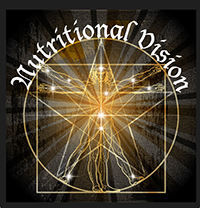BOOK REVIEW
by Katherine Carroll, NTP, NHF Executive Director
Mindful Aging; Embracing Your Life After 50 to Find Fulfillment, Purpose, and Joy
by Andrea Brandt, Ph.D, MFT (ISBN-13: 978-1683730781; PESI Publishing & Media; October 10, 2017; paperback, 230 pages, $16.99)
 The number of Americans ages 65 and older is projected to more than double from 46 million in 2016 to over 98 million by 2060, making up roughly one quarter of the total population, up from 15 percent last year. Those still working past age 65 are projected to rise to 27 percent for men and 20 percent for women by 2022, just five short years away. We are literally recreating the traditional view and experience of aging; redefining it. Andrea Brandt’s Mindful Aging can help us make the most of the time we have left. That is her goal and she succeeded.
The number of Americans ages 65 and older is projected to more than double from 46 million in 2016 to over 98 million by 2060, making up roughly one quarter of the total population, up from 15 percent last year. Those still working past age 65 are projected to rise to 27 percent for men and 20 percent for women by 2022, just five short years away. We are literally recreating the traditional view and experience of aging; redefining it. Andrea Brandt’s Mindful Aging can help us make the most of the time we have left. That is her goal and she succeeded.
Renowned psychotherapist, author, speaker, and aging expert Andrea Brandt, Ph.D, MFT, has over 35 years’ clinical experience. From varied publications such as Psychology Today, Huffington Post, Mind Body Green, and Psych Central, her contributions are extensive and well-received. Her Amazon marketing materials say Mindful Aging, “helps you throw out the old stereotypes about getting older and move toward the welcoming new evidence that your future is alive with possibility, providing steps to thrive today and into your golden years.”
I agree. Rather than allowing exhaustion and boredom to lead to retirement or giving up, Brandt challenges us to live life like we mean it and to reinvent ourselves. She shows increased health and longevity benefits in personal and real-life examples and studies. It is encouraging to learn that Frank Lloyd Wright was at his most prolific between 60 and 90. In the encouraging report from David Snowdon’s book Aging with Grace, Brandt cites a study of 600 nuns accustomed to exercising their minds. Upon autopsy, despite massive Alzheimer’s evidence, 15 nuns had no dementia symptoms, most likely due to their brain-challenging habits. Another study that Brandt cites (with endnotes, which I appreciated) revealed that subjects aged 70 to 78 using neurofeedback (a computer-aided training program), sped up their information processing, increased attention span, and memory. Elderly Chinese doing Tai Chi three times a week for eight months also performed better on memory tests; their brain volume had increased.
Brandt admonishes us to focus on creating the life we love. And instead of problem solving, particularly from learned helplessness, victim or fear-based decisions or catastrophic thinking, to focus on the vision of what we want. Brandt asks, “What will I do with the time I have left?” Mindful Aging empowers and equips one for a productive, fulfilled life at any age, not just for those 50 and older.
While sections of the book slowed or seemed too basic, the appeal to a wide readership of decades of age differences and life-paths means there is something for everyone. Mindful Aging is a gift: a wealth of free advice, encouragement, and guidance from a seasoned professional. Brandt sets the stage to enter the happiest, healthiest, and most productive and satisfying era of life no matter the reader’s age by living intentionally and without the baggage of trauma and limited or survival-based thinking, which leaves one stuck and can lead to illness. She shows us how to stop vital energy thieves that keep us from creating the life we love by conducting virtual therapy sessions to release trauma and old patterns with education and exercises at the end of every chapter. She shows us how emotions’ role is to prompt decision-making and action, signaling to us there is something to be done. We know that every thought comes with a chemical attached. In mind-body connection, Brandt’s acknowledgement and handling of emotions lays the foundation for health and happiness.
As a nutritional therapy practitioner, I would have expected emphasis on targeted nutrients for both mental and physical health. Instead, healthy nutrition alone was presented, such as dietary patterns practiced in the Blue Zone, which, although good, still reflect ever-lowering nutritional value today due to soil deterioration, pollution, and poisonous chemicals. Additionally, gut health and the microbiome’s influence on brain function, depression, health, and vitality were not mentioned. These overlooked aspects should have been addressed and then fleshed out.
Still, this is not just another “feel-good” book. Brandt’s clinical experience comes through as she explains clearly how to craft a life marked by health, purpose, creativity, and passion and offers exercises to bring it to life, literally. The scientific studies reassure readers that advancing years can be lived without the diminishment of health and relevance we have been conditioned to expect. Brandt’s book answers the question, “How do I live in the most meaningful way with the time I have left” and so fulfills the mission set forth in Mindful Aging.

No Comments Yet